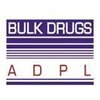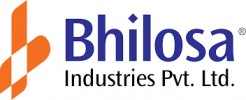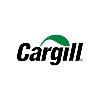Utility Engineer
30+ Utility Engineer Interview Questions and Answers

Asked in Hero Motors Company

Q. Types of water teatment plant &air conditioning system
There are various types of water treatment plants and air conditioning systems.
Water treatment plants: conventional filtration, membrane filtration, disinfection, desalination
Air conditioning systems: central air conditioning, split air conditioning, window air conditioning

Asked in Matrix Clothing

Q. What is boiler efficiency?
Boiler efficiency is a measure of how effectively a boiler converts fuel into usable heat energy.
Boiler efficiency is expressed as a percentage.
It is calculated by dividing the energy output of the boiler by the energy input.
Factors affecting boiler efficiency include combustion efficiency, heat transfer efficiency, and excess air levels.
Improving boiler efficiency can lead to significant energy savings and reduced emissions.
For example, a boiler with 80% efficiency means it ...read more

Asked in Excel Industries

Q. How do you calculate the cooling capacity of a screw chiller?
The cooling capacity of a screw chiller can be calculated using the formula: Cooling Capacity = Mass Flow Rate * Specific Heat Capacity * Temperature Difference
Determine the mass flow rate of the chilled water circulating through the chiller
Determine the specific heat capacity of the chilled water
Calculate the temperature difference between the chilled water entering and leaving the chiller
Multiply the mass flow rate, specific heat capacity, and temperature difference to obta...read more

Asked in Ktv Health Food

Q. What is the axial float of multi-stage centrifugal pumps?
Axial float is the movement of the rotor along the axis of rotation in multi stage centrifugal pumps.
Axial float is necessary to accommodate thermal expansion and contraction of the pump components.
It helps prevent damage to the pump due to thermal stresses.
Proper axial float ensures smooth operation and prolongs the life of the pump.
Example: In a multi stage centrifugal pump, the axial float may be around 0.5mm to 1mm.

Asked in Filatex India

Q. How do you check the Cooling Tower Cycle of Concentration (COC)?
Cooling tower COC can be checked by measuring the concentration of dissolved solids in the cooling water.
Collect a sample of cooling water from the tower basin.
Measure the concentration of dissolved solids in the sample using a conductivity meter or a refractometer.
Divide the concentration of dissolved solids in the sample by the concentration of dissolved solids in the makeup water to get the COC.
A COC of 3-5 is typically recommended for cooling towers.
Regular monitoring of ...read more
Asked in FMI Automotive Components

Q. Work of air conditioning, air compressor,
Air conditioning and air compressor are essential for maintaining comfortable indoor temperature and providing compressed air for various applications.
Air conditioning systems use refrigerants to cool and dehumidify indoor air, improving air quality and comfort.
Air compressors are used to power pneumatic tools, inflate tires, and supply compressed air for industrial processes.
Both air conditioning and air compressor systems require regular maintenance to ensure optimal perfor...read more
Utility Engineer Jobs



Asked in Ketul Chem

Q. Chiller work , compressor, cooling tower work explain?
Chiller, compressor, and cooling tower are all components of a cooling system used in HVAC systems.
A chiller is a machine that removes heat from a liquid via a vapor-compression or absorption refrigeration cycle.
A compressor is a mechanical device that increases the pressure of a gas by reducing its volume.
A cooling tower is a heat rejection device that extracts waste heat to the atmosphere through the cooling of a water stream to a lower temperature.
All three components work...read more

Asked in Anjan Drug

Q. What are the differential pressure and water parameters for a cooling tower?
Cooling tower differential pressure (dp) is crucial for assessing water flow and efficiency in cooling systems.
Differential pressure (dp) indicates the pressure drop across the cooling tower, affecting water circulation.
Typical dp values range from 1 to 5 psi, depending on system design and water flow rates.
High dp may indicate fouling or scaling in the tower, requiring maintenance.
Monitoring dp helps optimize water treatment processes and energy efficiency.
Share interview questions and help millions of jobseekers 🌟


Asked in SRF

Q. How can we reduce the operational costs of the plant?
Reduce operation cost of plant by optimizing processes and equipment.
Conduct regular maintenance to prevent breakdowns and reduce repair costs.
Implement energy-efficient technologies to reduce utility bills.
Train employees to operate equipment efficiently and minimize waste.
Monitor and analyze data to identify areas for improvement.
Consider outsourcing non-core functions to reduce labor costs.
Negotiate better deals with suppliers to reduce material costs.
Implement a continuou...read more

Asked in Ktv Health Food

Q. Explain the double effect vapor absorption cycle.
Double effect vapour absorption cycle is a type of refrigeration cycle that uses two separate absorption cycles to improve efficiency.
Consists of two separate absorption cycles: high temperature and low temperature
High temperature cycle generates vapour from the refrigerant by absorbing heat
Low temperature cycle uses the generated vapour to produce cooling effect
Overall efficiency is higher compared to single effect absorption cycle
Asked in Ardour Pack

Q. What should you do if there is an issue in ink curing?
If there is an issue in ink curing, adjust the curing temperature and time.
Check the ink manufacturer's recommendations for curing temperature and time
Ensure that the ink is applied evenly and at the correct thickness
Consider using a different ink or substrate if issues persist

Asked in Excel Industries

Q. What is the function of an expansion valve?
The expansion valve is a device used in refrigeration and air conditioning systems to control the flow of refrigerant.
It is located between the condenser and the evaporator in the system.
The expansion valve regulates the flow of high-pressure, high-temperature refrigerant from the condenser to the low-pressure, low-temperature refrigerant in the evaporator.
It maintains the proper pressure and temperature levels in the evaporator to ensure efficient cooling or heating.
The valv...read more

Asked in SRF

Q. How can boiler efficiency be increased?
Boiler efficiency can be increased by improving combustion efficiency, reducing heat loss, and optimizing boiler operation.
Improve combustion efficiency by maintaining proper air-to-fuel ratio and reducing excess air
Reduce heat loss by insulating boiler surfaces and minimizing flue gas temperature
Optimize boiler operation by regular maintenance, tuning, and monitoring
Use economizers and air preheaters to recover waste heat
Upgrade to high-efficiency burners and boilers
Implemen...read more
Asked in Ardour Pack

Q. What do you know about UV lamps?
UV lamps are devices that emit ultraviolet light and are commonly used for sterilization and disinfection purposes.
UV lamps are used in various industries such as healthcare, food processing, and water treatment.
They are effective in killing bacteria, viruses, and other microorganisms.
UV lamps come in different types such as low-pressure mercury lamps, high-pressure mercury lamps, and LED lamps.
They require proper maintenance and replacement of bulbs to ensure optimal perform...read more

Asked in Hindustan Urvarak & Rasayan

Q. What are the basic concepts of processes?
Processes involve a series of actions or steps taken to achieve a particular end in engineering and utility management.
Input-Output: Every process has inputs (raw materials) and outputs (finished products). Example: Water treatment plants.
Transformation: Processes transform inputs into outputs through various methods. Example: Chemical reactions in wastewater treatment.
Control: Monitoring and controlling processes ensures efficiency and safety. Example: SCADA systems in utili...read more

Asked in Bhilosa Industries

Q. What types of compressors are you familiar with, and how do they work?
There are different types of compressors used in utility engineering, such as centrifugal, reciprocating, rotary screw, and scroll compressors.
Centrifugal compressors use a rotating impeller to compress air or gas.
Reciprocating compressors use pistons to compress air in a cylinder.
Rotary screw compressors use two rotating screws to compress air.
Scroll compressors use two interleaving scrolls to compress air.

Asked in Ktv Health Food

Q. Describe the vapor compression cycle.
Vapour compression cycle is a thermodynamic process used in refrigeration and air conditioning systems.
Involves four main components: compressor, condenser, expansion valve, and evaporator
Refrigerant is compressed in the compressor, raising its temperature and pressure
High-pressure, high-temperature refrigerant then flows to the condenser where it releases heat to the surroundings and condenses into a liquid
Liquid refrigerant passes through the expansion valve, reducing its p...read more

Asked in Deccan Fine Chemicals

Q. How do you maintain the parameters of an RO plant?
Maintaining parameters of an RO plant involves regular monitoring, calibration, and cleaning to ensure optimal performance.
Regularly monitor key parameters such as flow rate, pressure, and TDS levels to ensure they are within acceptable ranges.
Calibrate sensors and instruments periodically to maintain accuracy in measurement.
Perform routine maintenance tasks such as cleaning filters, membranes, and pumps to prevent clogging and ensure efficient operation.
Keep a log of mainten...read more

Asked in Deccan Fine Chemicals

Q. vapour compressor cycle Latent heat Sensible heat Types of cooling tower Types of chiller
The vapour compressor cycle is a thermodynamic cycle used in refrigeration systems to remove heat from a low-temperature region and transfer it to a high-temperature region.
The cycle consists of four main components: compressor, condenser, expansion valve, and evaporator.
During the cycle, the refrigerant undergoes phase changes from vapor to liquid and back to vapor.
Latent heat refers to the heat absorbed or released during phase changes, such as during condensation or evapor...read more

Asked in Filatex India

Q. What equipment handling experience do you have?
Equipment handling refers to the safe and proper management of machinery and tools.
It involves understanding the equipment's capabilities and limitations
Properly storing and maintaining equipment
Following safety protocols when operating equipment
Training others on how to use equipment safely
Examples include handling heavy machinery, power tools, and electrical equipment

Asked in Jindal Stainless

Q. What is coupling and what are the different types of coupling?
Coupling refers to the interaction between components in a system, influencing their dependency and communication.
Tight Coupling: Components are highly dependent on each other. Example: A class that directly uses another class's methods.
Loose Coupling: Components are independent, reducing the impact of changes. Example: Using interfaces or APIs for communication.
Data Coupling: Components share data through parameters. Example: Functions that pass data structures as arguments....read more

Asked in SRF

Q. What are your ideas for preventing breakdowns?
Regular maintenance, proper training, and use of advanced technology can prevent breakdowns.
Regular maintenance of equipment can prevent breakdowns.
Proper training of employees can reduce the risk of human error.
Use of advanced technology like predictive maintenance can detect potential issues before they become breakdowns.
Asked in Ardour Pack

Q. Outline the key aspects of utility engineering.
Utility key aspects include reliability, efficiency, safety, and cost-effectiveness.
Reliability: ensuring uninterrupted supply of utilities
Efficiency: optimizing the use of resources to minimize waste
Safety: ensuring the safety of workers and the public
Cost-effectiveness: providing utilities at a reasonable cost
Examples: power generation, water treatment, waste management

Asked in Excel Industries

Q. Components of nitrogen plant
Components of a nitrogen plant include air compressor, air dryer, air filter, nitrogen generator, and nitrogen storage tank.
Air compressor: compresses air from the atmosphere
Air dryer: removes moisture from the compressed air
Air filter: removes impurities from the compressed air
Nitrogen generator: separates nitrogen from the compressed air
Nitrogen storage tank: stores the produced nitrogen

Asked in Anjan Drug

Q. Fuel description
Fuel is a substance that is burned to produce energy.
Fuel can be in the form of gas, liquid, or solid.
Examples of fuels include gasoline, diesel, natural gas, coal, and wood.
The type of fuel used depends on the application and availability.
Fuels are used in various industries such as transportation, power generation, and heating.
Efficient use of fuel is important to reduce environmental impact and cost.
Asked in Asepto

Q. How many Boiler safty
Boiler safety is crucial for preventing accidents and ensuring efficient operation.
Regular maintenance and inspections are essential for ensuring boiler safety.
Proper training for operators on safety protocols is important.
Installing safety devices such as pressure relief valves and water level controls is necessary.
Following safety regulations and guidelines from organizations like ASME is critical.
Conducting regular safety drills and emergency response training can help pre...read more
Asked in FMI Automotive Components

Q. All utility pmr activities
Utility PMR activities refer to the maintenance and repair of power, water, gas, and other utility systems.
PMR stands for Preventive Maintenance and Repair
Activities include regular inspections, testing, cleaning, and replacement of parts
Examples of utility systems include electrical power distribution, water treatment and distribution, gas pipelines, and sewage systems

Asked in Gland Pharma

Q. Operation of PWG,PSG,MCDW,PRG,PLANTS
PWG, PSG, MCDW, PRG, and PLANTS are all related to the operation of utility systems.
PWG stands for Power Generating Unit and is responsible for generating electricity.
PSG stands for Power Substation Generator and is responsible for distributing electricity.
MCDW stands for Municipal Cold Drinking Water and is responsible for providing clean drinking water.
PRG stands for Pressure Reducing Station and is responsible for regulating water pressure.
PLANTS refer to various utility p...read more

Asked in Jio

Q. Passive infra in telecommunications
Passive infrastructure refers to the physical components of a telecommunications network that do not require power to operate.
Includes items such as cables, antennas, towers, and cabinets
Does not include active components like routers or switches
Critical for supporting the functionality of active network components
Examples: fiber optic cables, cell towers, distribution frames

Asked in Deccan Fine Chemicals

Q. Briefly explain the refrigeration system.
Refrigeration system is a mechanical system that removes heat from a space to lower its temperature.
Refrigeration systems use a refrigerant to absorb and release heat.
The basic components of a refrigeration system include a compressor, condenser, expansion valve, and evaporator.
Examples of refrigeration systems include air conditioning units, refrigerators, and freezers.
Interview Questions of Similar Designations
Interview Experiences of Popular Companies






Calculate your in-hand salary
Confused about how your in-hand salary is calculated? Enter your annual salary (CTC) and get your in-hand salary


Reviews
Interviews
Salaries
Users










